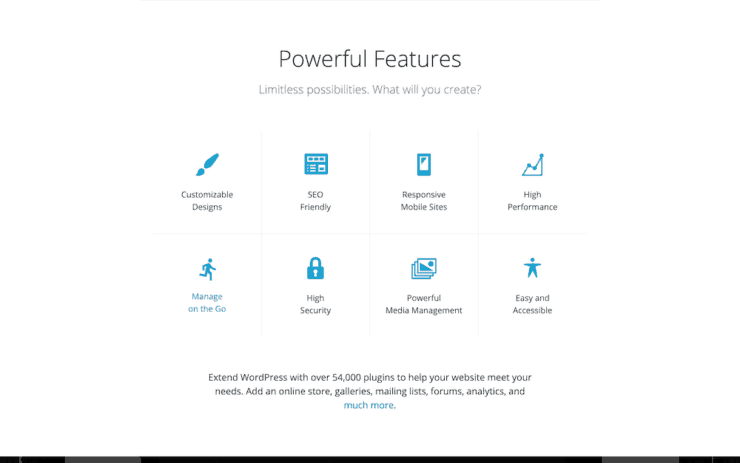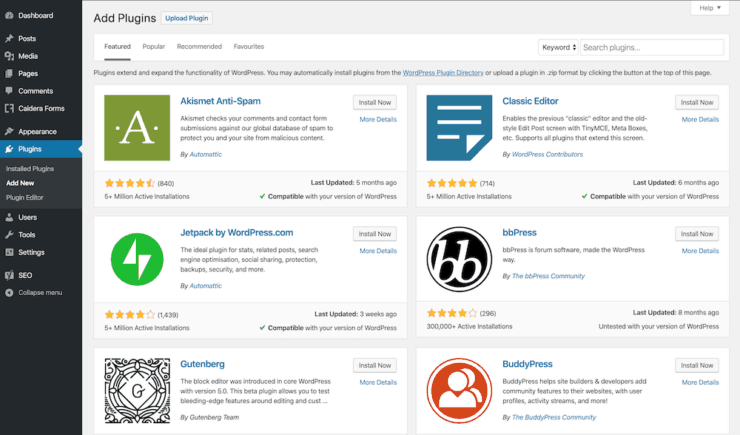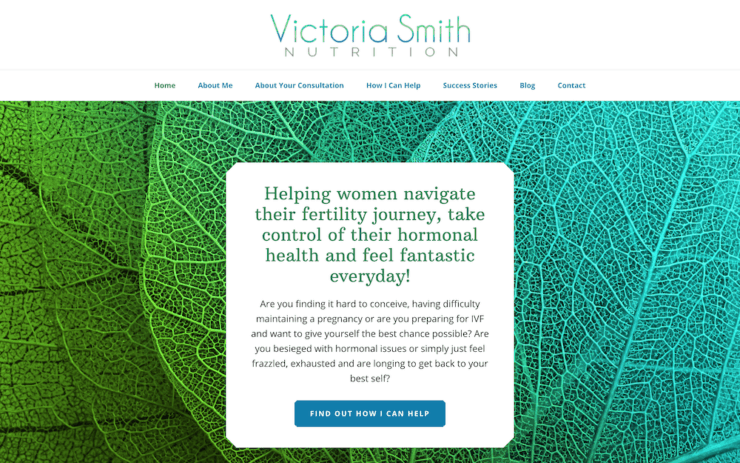Starting a new business? If so, you’ll no doubt encounter one of the biggest challenges every business owner faces: getting the word out. While there are many options for marketing a new business, few businesses wouldn’t benefit from having a website. But what does a small business website need? Here I’ll cover what you should know about creating a lean website for your small business – one without any of the unnecessary stuff.
While I’ll focus mainly on using WordPress (after all, it’s the most popular platform for building small business websites), I’ll also touch on some of the other popular options available right now.
Website platforms for small businesses
The current, most commonly used methods for building a small business website can be broken down into two broad categories:
- Proprietary website builders, e.g. Wix and Squarespace
- Open source content management systems, e.g. WordPress and Drupal
In both cases, you can take the do-it-yourself approach, or you can hire people to do it for you.
Whether you opt for a website builder or open source content management system, you’ll discover pretty quickly that each comes with its own pros and cons. Let’s look at some of those now.
Website builders: pros and cons
Website builders are all-in-one options for small business websites. This type of setup can be an easy and cheap route to getting a site online. But the trade-off is often very limited flexibility in core areas, including search engine optimisation (SEO), design and accessibility.

In saying that, there are cases where a website builder could be what you need. If you’re just looking for a simple site to direct people to, with little need to be found through search, then a website builder might be a viable option.
And, if you don’t have any experience building a website and can’t (yet) afford to hire someone to do it for you, these platforms may be the only option – at least to begin with.
That’s why oftentimes a new business owner might choose one of these website builders as a short-term solution, before moving to an open source platform when resources allow.
Open source content management systems: pros and cons
WordPress and Drupal are the two most well known and popular open source content management systems. In fact, WordPress currently powers around 34% of all websites!

Although open source software is free to download and use, you do need to pay for at least two fundamental components to get your website online: a domain name and hosting (more about these below). Exactly how much this costs will depend on your requirements and the companies you work with. However it can actually work out cheaper in the long run compared to say an ongoing Squarespace subscription.
Getting a website online without the aid of a website builder means you need to either invest a significant amount of time in learning the ropes, or you’ll need to hire someone with these skills. Even more so if you’re going to take advantage of the flexibility open source software affords.
Launching a WordPress website
Part of what makes WordPress so popular is the way it allows you to grow and change your website along with your business.
You can take your website all the way from a compact, low-cost solution when you’re just starting out, and build it up as your business matures.
Starting out on the WordPress route can be daunting if it’s completely new to you. Don’t worry! I’m going to walk you through the five fundamental components of a WordPress website now (including a domain name and hosting). Soon enough it’ll all make sense.
Once you’re familiar with these fundamental components, it’ll also help you decide where best to allocate your resources.
To get a WordPress website up and running you need five fundamental components (feel free to use the links to skip ahead to different sections):
I’ll walk you through each of these five components now.
1. Domain name
The domain name is a small but very important part of your small business website planning. It’s the address people will type into their internet browser (e.g. Google Chrome, Firefox, etc) to access your website.
To arrive on our website, Callia Web, you can type in the domain name, calliaweb.co.uk.
As a general rule, your domain name should be short and easy to remember. If it doesn’t meet these criteria, people could struggle to access your website. Often it will also incorporate your business name so it’s easier for people to find you online.
The part of the domain after the dot is called the top-level domain (TLD). We’ve chosen to use the TLD, co.uk to make it clear to visitors we’re based in the UK. However, we also own the domain name calliaweb.com, which we’ve redirected to calliaweb.co.uk – in case anyone types that into their browser instead.
So let’s presume you have an idea for a domain name for your small business website: how do you get your hands on it? It is best if you register the domain name yourself, rather than your web developer, so it sits in account you maintain access to.
- Online through a domain name provider e.g. NameCheap affiliate link
- As an addon to your website hosting eg 34SP – more about hosting later
In all cases, you can only really rent a domain name. You’ll need to renew it regularly, otherwise it goes back up for sale and anyone could purchase it.
Be aware that some companies will charge very cheap prices when you first purchase a domain name, only to increase them when it’s time to renew. So do read the fine print! The good news is, you can usually transfer your domain name to a different provider if you find one with more reasonable pricing later.
There’s no harm in going ahead and buying your preferred domain name – especially if you’re concerned that someone else might buy it before you have time to get your website live. It’s usually possible to link your domain name up to your hosting later when your website is ready.
2. Website content
Website content is the text, images and videos on a website. Sometimes people won’t start thinking about their content until after their website is designed and ready to go. However, it’s a really good idea to get a plan together earlier – even if you don’t have the exact wording, images or videos to hand just yet.
The clearer your plan, the easier it will be to hone in on the leanest structure for your website. Otherwise you could find you have a lot of features you don’t need, or, conversely, accidentally leave out parts you really do need.
We’ve previously covered planning a digital content strategy. This is a good place to start – particularly if you’d like to take the do-it-yourself route for your content. If you’re thinking about hiring a professional content creator, check out our article about that, covering the pros, cons and pitfalls to watch out for.
3. Website hosting
Hosting companies store your website’s files on their servers. They help keep your website secure and serve it up whenever someone tries to access it.
Hosting services can cost anywhere from a few pounds a month to many thousands of pounds. It’s best to go with a company that deals specifically in WordPress hosting. The company and package you choose will also depend on:
- Your budget
- The expected size of your website
- Your website’s complexity
- How efficient you want/need it to be
A large, complex website might need its own dedicated server to work most efficiently. On the other hand, a small, simple website may function well enough on low-cost, shared hosting.
If you’re using a website builder or hiring a web designer, hosting is often factored into the ongoing subscription or maintenance pricing.
For more detail, check out our post about choosing a website hosting company!
4. WordPress software
WordPress allows you to create, publish and store your website’s pages in a user friendly way.
It gets installed on your hosting and will commonly be used as is. The software code can be modified to suit your particular business – if necessary.
You can also easily add plugins from your WordPress Dashboard:

Plugins are bits of code that perform extra functions. One we almost universally recommend is Yoast, which is an excellent, free plugin (with a premium option), that makes it simple to add meta descriptions and SEO titles to your website pages – vastly improving SEO.
5. WordPress theme
WordPress Themes change the design and layout of your website, rather than the function. There are many themes available, specifically for small business websites – some are free and some have a one-off fee or a subscription to cover ongoing updates.
If you can’t find a theme to meet your needs exactly, the code can be modified by creating what’s known as a ‘child theme’. We often use the highly robust Genesis Framework, which provides a secure foundation for your website and can be modified to whatever your particular requirements are.
Alternatively, you can create (or have someone create for you) an entirely bespoke theme.
Keep it simple
What exactly your website needs, will depend on your business. To figure this out, it helps to properly scope your website before diving in and creating it.
By focusing on what you really need for launch – rather than what you could possibly need at some stage in the future – you minimise the likelihood of wasting time and money. Then, once your core website is up and running, you can adapt it as your business grows over time.
In general, keeping it as simple as possible is better not just for your budget, but also for your website’s users! Simplicity makes it easier for them to access the information they want on your site.
A good example of the effectiveness of a simple website is this one we helped Victoria Smith build for her nutrition business:

The simple design and prominent calls to action help clients successfully navigate her site and reach out for a consultation.
We’ve previously discussed the merits of building a minimum viable website – focusing only on the features you really need in the first instance. If you’re launching a lean startup, why not mirror this approach in your website build by keeping it lean too?
When to launch a small business website
So should you wait until your business is up and running, or go ahead and launch your website first?
You can do either! The good thing is, you don’t even need to have a complete website in order to launch it. Once you have your domain name, hosting and WordPress software sorted, you can go ahead and put up a holding page.
It can take a little while for Google to index your website, so a holding page with your business name will get this process underway as early as possible.
And, why not start building and capturing interest in your business as early as possible too? You can provide some brief information on your holding page so people start to get excited. Plus you can include contact details so they can get in touch with you directly.
You can also add a signup form, collecting names and emails of interested parties, before you have a full website.
Once you’re ready for the real deal, you might have a few core website pages such as home, about, services and contact. You might also have a contact form to make it easy for people to get in touch. You’ll likely want Yoast for your SEO, and you may find it useful to include a blog.
You can then iterate on this, as and when you need to.
With WordPress, extra content is very easy to add. Plus you can always increase the functionality later, when you have the need and the resources.
A live website is also a great testing ground to see what works and what doesn’t. With tools such as Google Analytics and Hotjar, you can find out how people use your website, and modify it accordingly.
Narrowing down all those small business website options!
With seemingly endless options available for creating a website, choosing just one can feel overwhelming to say the least.
Focusing on what you need for your small business website is the best place to start. Crucially, your resources include not just money, but also the time and skills available to you. Which is why WordPress is such a great tool and why it’s so popular among small business owners. It allows you to allocate your resources in whatever way works for you.
Let’s recap what you need to launch a WordPress website:
- A domain name: should be short and easy to remember, and probably include your business name
- Website content: the clearer you are on what you need to communicate, the easier to hone in on the leanest structure for your site
- Website hosting: influenced by your budget, along with how much storage space you need and how efficient you’d like your website to be
- WordPress software: highly flexible and free to download, this software lets you create, publish, store and organise all your website pages in a user friendly way
- A WordPress theme: decides what your website looks like to visitors, and can be readily modified to suit your brand and the needs of your particular business
I hope you’ve found this whistle-stop tour of small business websites informative! As ever, if you have any questions, do get in touch and we’d be happy to clarify how it all works.
And, if you’re ready to get started on your small business website, we have various packages designed just for you.
Our new Quick Launch package makes it easy and fast to get online with a quick turnaround on a basic website.

 Changing seasons
Changing seasons
Leave a Reply